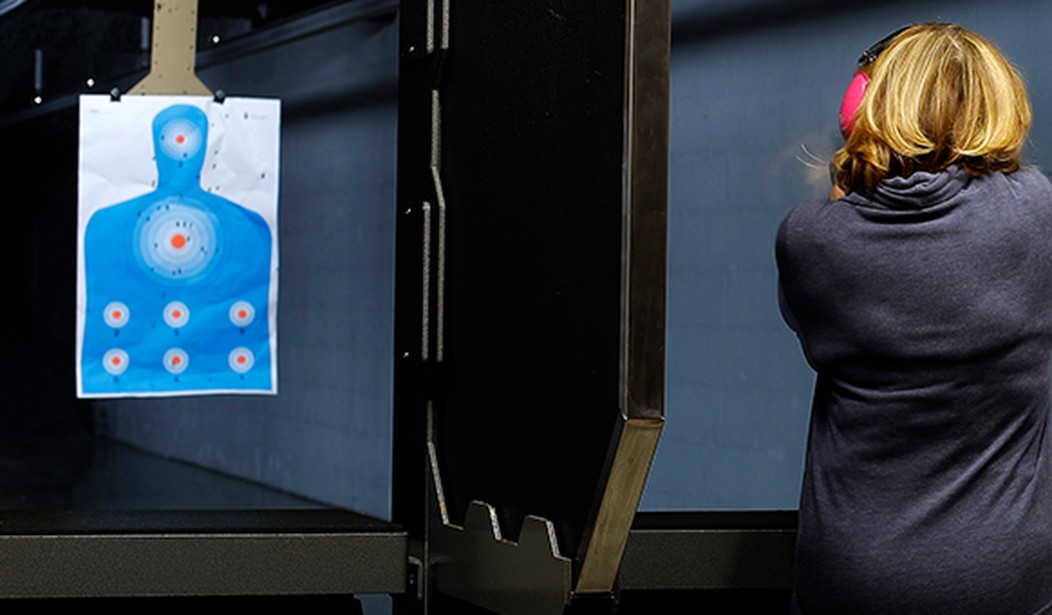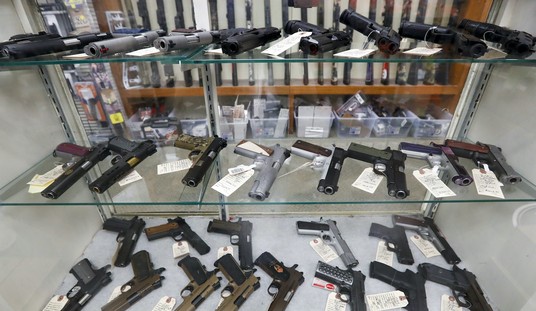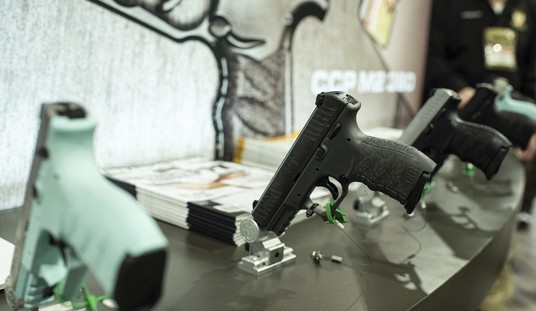In theory, the gun control lobby loves firearm training… or at least training mandates. As we’ve seen in the wake of the Supreme Court’s decision in NYSPRA v. Bruen, blue states have added burdensome, costly, and time-consuming training requirements for concealed carry applicants that are already having a chilling effect on those law-abiding gun owners trying to exercise their right to bear arms in self-defense.
But when it comes to training itself, one gun control activist has discovered he doesn’t like what’s being taught. Harel Shapira, an associate professor of sociology at the University of Texas-Austin and the author of an upcoming book on “gun culture”, writes in the New York Times that he’s taken 42 firearms training courses over the past ten years in red and blue states, and is horrified by what he found.
First, the good news: Every firearms instructor I encountered was extremely serious about preventing accidents. When a student inadvertently pointed his gun at me for a moment, our instructor immediately chastised him. And when the student objected, saying he didn’t have his finger on the trigger, the instructor became livid and threatened to kick him out of class.
But teaching people how to avoid shooting someone by accident is a small part of what these classes are about. The primary lessons are about if and when to shoot someone on purpose. And this is where the trouble begins.
Instructors repeatedly told me that a big part of their job was to make people feel vulnerable, to make them aware of dangers they were not conscious of before to understand that bad things can happen at any time. One instructor told me he encourages students to carry their gun at all times. If students say they plan to leave it in the car, he responds, “So what you’re telling me is the only time you are ever going to get attacked is if you are in your car?”
The instructors describe a world teeming with violent and deranged individuals. And not just any individuals. The scenarios cluster around the public spaces of racially diverse cities. “More often than not,” an instructor who had been a high-ranking police officer said, the place you’re likely to be attacked is “in an urban part of society.” Another instructor, also a former police officer, tells students to keep their gas tanks filled at least halfway to avoid situations in which “it’s the middle of the night and you need to get gas in downtown Houston.”
Contrary to Shapria’s assertion that the focus of firearms training classes are about shooting “someone on purpose”, what he describes are efforts by instructors to teach their students to stay out of dangerous situations where they might end up having to act in self-defense. Advising students to keep their gas tank filled so they don’t have to stop for gas in a high-crime area late at night isn’t teaching people to be terrified every time they leave the home; it’s a common sense tip to help them avoid being the victim of a robbery or carjacking.
Officially, the message is caution. A line I heard from multiple instructors was: If you are not about to die in the next three seconds, don’t pull the trigger. If you are not 100 percent sure, then don’t shoot. But relentlessly harping on the dangers that surround us changes the way students assess those risks.
I experienced it myself.
On a recent night I saw a driver who didn’t appear to realize that he was going the wrong way on a one-way street. As the other car approached, I began to slow down, roll down my window and stick my hand out in a friendly gesture. Suddenly I worried the other driver might have a gun. How might he respond to someone slowing down a car and waving at him in the middle of the night? Would he shoot? Probably not. But it’s not the odds, I remember telling myself; it’s the consequences.
That’s the great irony of firearms training: In learning how to use a gun for self-defense, something that seems like it might give you confidence and a sense of safety, people end up feeling more afraid than before. “I knew the world was dangerous,” a student told me after class one day, “but this was a real wake-up call.” “He scared the daylights out of me,” I heard from another student, who went straight from class to a gun store. Others who already owned a gun told me the classes made them feel the gun should be bigger, with a larger caliber and more capacity.
I hate to break it to Shapira, but he may be guilty of bringing his own bias to the table here. While studies examining the fear levels of gun owners and non-gun owners are few and far between, I did run across this 2019 study that found on average gun owners were less afraid than their non-gun owning counterparts.
For the most part, phobias and fears were unrelated to gun ownership. We tested whether the odds of being a gun owner varied according to two phobia indices and two victimization indices. Only one of the indices (the phobia count) was (inversely) associated with gun ownership. We then tested 15 associations between individual phobias/fears and gun ownership. Approximately 80% of these associations were null, and only 20% were statistically significant at conventional levels. The only evidence that gun ownership is an expression of fear was observed in the context of mass shootings. Although the weight of these findings call into question the idea that people own guns because they are afraid, we do not dismiss the symptom perspective entirely.
Our results consistently supported the palliative perspective and our second hypothesis. In our focal analyses, we observed that people who own guns tend to report lower overall levels of specific phobias and victimization fears than people who do not own guns. Our analyses of individual phobias and fears also revealed that people who own guns are less likely to report fears associated with animals (bugs, snakes, dogs, or any other animal/insect), heights (like balconies, bridges, or roofs), zombies, and being mugged. These findings are consistent with the idea that guns help their owners to feel safe, secure, and protected (Braverman, 2016; Campbell, 2018; Hauser & Kleck, 2013; Kleck, 1997; Parker et al., 2017; Wintemute, 2008).
Again, this is one study, but it stands in stark contrast to Shapira’s assertion that the more training gun owners receive, the more fearful they become. As he hyperbolically concludes, “learning to carry a gun isn’t teaching Americans to have good manners. It’s training them to be suspicious and atomized, learning to protect themselves, no matter how great the risk to others. It’s training them to not be citizens.”
So who’s the real fearmonger here; the firearms instructors who preach caution and protection, or the anti-gun academic who proclaims that firearms instruction (and concealed carry in general) is turning gun owners into paranoid nutjobs who view everyone around them as a deadly threat? For all of Shapira’s handwringing about the instruction in the classes he took, he’s the one who’s preaching to the Times‘ anti-gun choir that they should live their lives in fear; not of a mugging, armed robbery, or carjacking but by the roughly 25-million licensed concealed carry holders in the United States.









Join the conversation as a VIP Member